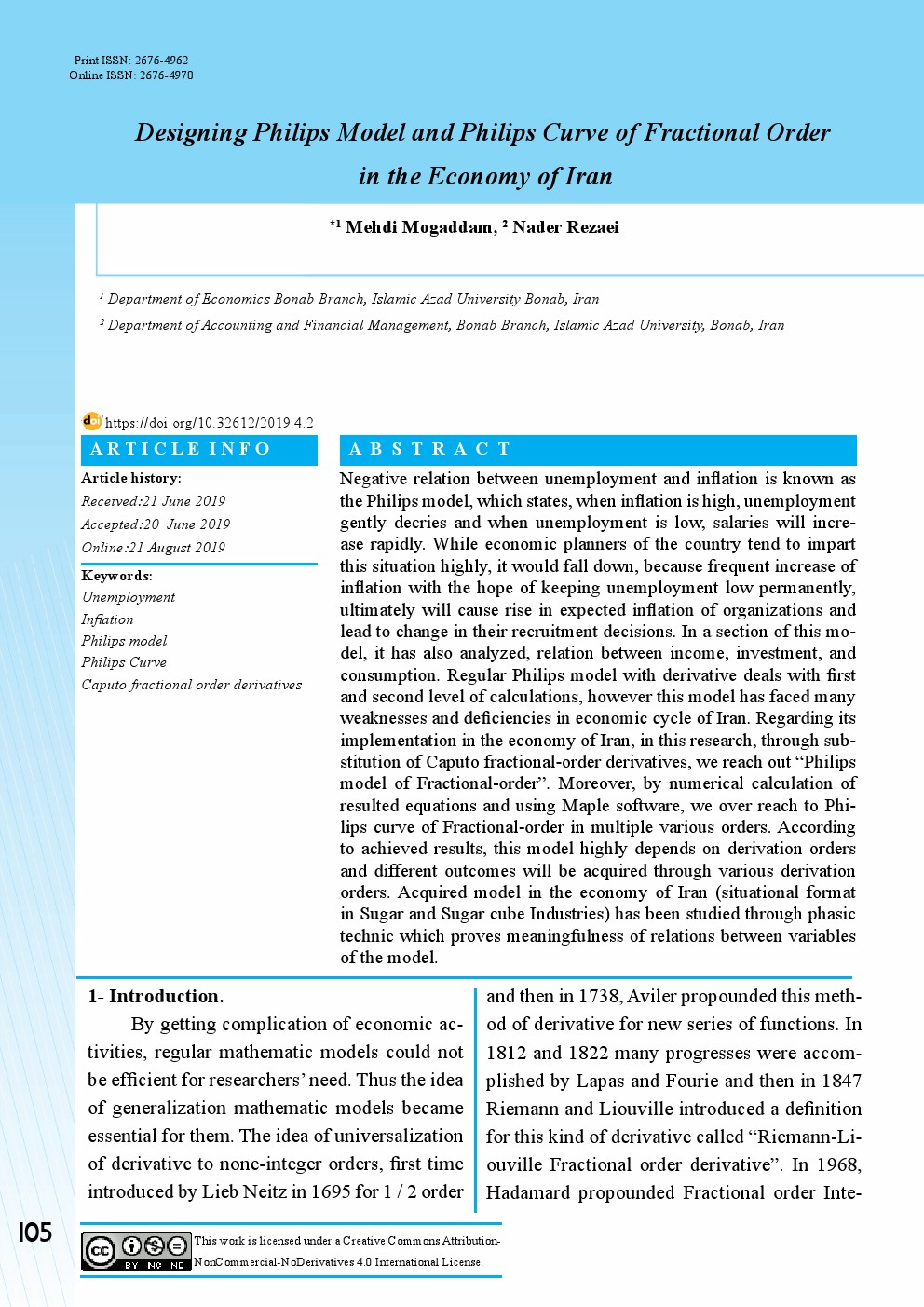Designing Philips Model and Philips Curve of Fractional Order in the Economy of Iran
Main Article Content
Abstract
Negative relation between unemployment and inflation is known as the Philips model, which states, when inflation is high, unemployment gently decries and when unemployment is low, salaries will increase rapidly. While economic planners of the country tend to impart this situation highly, it would fall down, because frequent increase of inflation with the hope of keeping unemployment low permanently, ultimately will cause rise in expected inflation of organizations and lead to change in their recruitment decisions. In a section of this model, it has also analyzed, relation between income, investment, and consumption. Regular Philips model with derivative deals with first and second level of calculations, however this model has faced many weaknesses and deficiencies in economic cycle of Iran. Regarding its implementation in the economy of Iran, in this research, through substitution of Caputo fractional-order derivatives, we reach out “Philips model of Fractional-order”. Moreover, by numerical calculation of resulted equations and using Maple software, we over reach to Philips curve of Fractional-order in multiple various orders. According to achieved results, this model highly depends on derivation orders and different outcomes will be acquired through various derivation orders. Acquired model in the economy of Iran (situational format in Sugar and Sugar cube Industries) has been studied through phasic technic which proves meaningfulness of relations between variables of the model.
Downloads
Article Details

This work is licensed under a Creative Commons Attribution-NonCommercial-NoDerivatives 4.0 International License.
References
Krasnoselski M. A.,(1964), Positive solutions of operator equations, P. Noordhoff Ltd, Groningen.
Miller KS, Ross B,(1993), An Introduction to the fractional calculus and fractional differentialequation, John Wiley.
Oldham KB, Spainer K,(1974), The Fractional Calculus, Academic Press, New York.
Samko SG, Kilbas A.A, Marichev O.I,(1993), Fractional Integral and Derivative, Theory and Applications. Gordon and Breach, Switzerland.
Hans-Walter Lorenz,(1993), Nonlinear Dynamical Economics and Chaotic Motion, Gottingen, Germany.
Hooshang M. Beheshti,( 2007 ), Fuzzy logic and performance evaluation: Discussionand application.
Sharon. M. Fuzzy logic and evaluation of advanced technologies. USA(2008). 110

